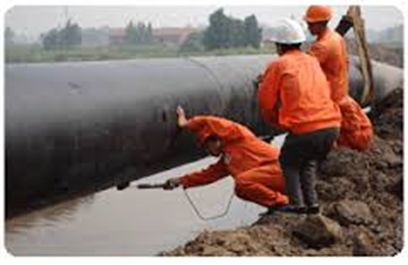What does it take to be a coating inspector?
Posted by Tom Swan on Mar 25th 2020
What does it take to be a coating inspector? |
| EXTRACT
BE Prepared – It’s just not for Boy Scouts. ARTICLE CONTENT Before they take on a job, coating inspectors can do several types of preparation. In addition to obtaining professional certification, they should also have knowledge and experience that's appropriate for the job. A good inspector not only know how to use the inspection tools but also understands how the tools work and why you follow certain procedures. If you meet these qualitifications, whether you are inspection a bridge, a pipeline, a tank lining or marine structure, there are enough similarities between these projects that inspectors should be able to transition between projects with only a slight learning cure. Prior to taking on any project, whether as a lead inspector or just an inspector, it is important to prepare in advance before you get to the job site. You should have read and summarized the specifications. If you have any question, bring them up before the start of the project. Get clarification or changes in writing. If the contractor does not know the answer, it is his responsibility to get the answer and provide it in writing. You can read more about the project preparation in our online Coating Inspector's Handbook. Certification Though it's only a part of the inspector's training, this can give each inspector a solid ground to build best inspection practices off of. It's important to note that each certification represents specific skill sets that might not necessarily apply to all aspects of a job. NACE and SSPC programs both require time commitments. Either course can provide an excellent base, but nothing is a substitute for on the job experience. For concrete-specific jobs, certification from the International Concrete Repair Institute may also apply. Programs from this source include concrete slab moisture testing and concrete surface repair technician certification, the latter of which encompasses a five-year training period "A pre-construction meeting can leave all parties with realistic expectations." Pre-inspection planning Make sure both the inspectors and the contractors have the proper tools based on the project specifications. Determine in advance if the instruments need third party certification. Make sure you have the proper standards on site to make sure all instruments are in proper working order. Not all instruments measure the same. For example, if the contractor is using TestEx tape to determine surface profile and you are using a Surface Profile meter, you will probably get different values. If you understand why this occurs, it may be fine to do it this way but this should be discussed prior to starting the project. Also, if The contractor is using a sling and you are using an electronic meter, it is quite possible to get different readings. Do you know why and how do you resolve this. (Hint: this is discussed in detail in our Technical information on the web site) Inspection Aids Coating inspectors need to know what to expect and which tools to use in their work.
Equipment troubleshooting skills You can troubleshoot the best when you not only understand how the test works but also why it works or doesn’t work. Many of the tips can be found in the Coating Inspectors Handbook on our web site Contact M-Test to learn more about what makes an inspector, as well as inspection equipment options. CATEGORIES Testing Tips KEYWORDS surface finish testercccccc |



 my account
my account 